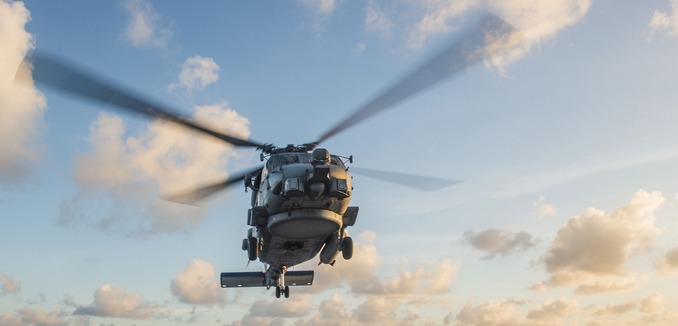An Iranian naval vessel aimed a gun at a U.S. Navy helicopter flying over international waters on Saturday, continuing Tehran’s pattern of aggressive behavior since the implementation of the nuclear deal, Reuters reported.
The encounter, which occurred when a Navy MH-60 helicopter flew within a half mile of two Iranian ships in the critical Straits of Hormuz waterway, was characterized by two U.S. officials as “unsafe and unprofessional.”
The number of incidents between Iranian and American naval forces approximately doubled since the nuclear deal was implemented in January. A U.S. defense official told Fox News in September that there have been 31 interactions deemed “unsafe and unprofessional” between the U.S. Navy and Iran, which is the same amount for all of 2015. “Each time, Iran was the aggressor,” Navy officials told Fox.
Ten American sailors and their two boats were seized by the Islamic Revolutionary Guard Corps (IRGC) naval forces in January of this year in violation of international law. Iran portrayed their capture as a victory against the U.S., releasing the sailors after claiming that Washington apologized for the incident. Khamenei proclaimed that the naval forces who captured the sailors did “God’s deed” and issued medals to the commanders involved, while the IRGC announced plans to build a statue to commemorate the seizure.
In May, the deputy commander of the IRGC threatened to close the strategic Straits of Hormuz to the U.S. and its allies if they “threaten us,” adding: “Americans cannot make safe any part of the world.”
In August, the American destroyer USS Nitze filmed four Iranian boats approaching it at fast speeds in international waters, with two of the vessels coming within 300 yards, despite the Nitze issuing several radio, whistle, and flare warnings. This “created a dangerous, harassing situation” that was only de-escalated by the Nitze taking defensive maneuvers, an American defense official said.
In October, Iran-backed Houthi militias fired rockets a U.S. Navy ship, the USS Mason, which was sailing north of the strategic Bab al-Mandab strait near Yemen.
The U.S. Navy reported in July that in 2015, there were close to 300 encounters or “interactions” between American and Iranian naval vessels in the Persian Gulf. While most of the encounters were not considered to be harassment, the behavior of the Iranian navy was found to be less disciplined than that of other navies. Lt. Forrest Griggs, the operations officer of the USS New Orleans, explained that risks arise from the unpredictable behavior and uncertain intent of the Iranian vessels. “It’s very common for them to come up to within 300, 500 yards of us, and then they’ll turn, or parallel us and stop,” he said.
Vice Adm. Kevin Donegan, the commander of the Navy’s 5th Fleet, observed in November of last year that Iran’s “malign behavior” at sea had not changed since the announcement of the nuclear deal four months earlier.
[Photo: Naval Surface Warriors / Flickr ]




